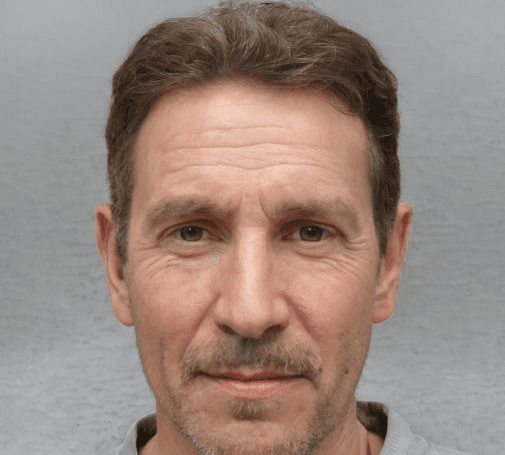Why Some of the Best Medtech Opportunities Hide in Plain Sight
Interview with BRIJ Medical CEO Tim Gleeson

Key Learnings From Tim's Experience
Look where everyone else stopped looking. In medtech, breakthrough doesn’t always mean brand new. Some of the best opportunities sit in markets so familiar they’ve become invisible — categories dominated by incumbents who assume there’s nothing left to improve. For Tim, the play isn’t to out-innovate the world — it’s to quietly out-execute in spaces where competitors have grown comfortable.
Commercial traction starts long before revenue. In medtech, adoption isn’t just about having the right product — it’s about understanding the networks of influence that drive clinical behavior. Tim built BRIJ’s foundation by focusing first on physician champions, preparing for longer-than-expected sales cycles, and embracing modern marketing tactics that meet clinicians where they are.
Use the "2-4 Rule" for better fundraising. Tim’s playbook for capital discipline is rooted in realism: every milestone takes twice as long and costs four times as much as founders expect. His rule of thumb — raise when dinner is served — reminds leaders to secure funding while investor interest is high, not when cash is low.
In medtech, attention gravitates toward moonshots — robots, AI, and futuristic therapeutics promising to change everything.
But some of the most durable success stories often start in unglamorous places: large markets hiding obvious problems that no one bothers to fix. That’s the kind of opportunity Tim Gleeson looks for. As CEO of BRIJ Medical, he’s focused on rethinking one of the oldest steps in surgery — how physicians close the skin after an operation.
BRIJ Medical’s core technology, the Brijjit Force Modulating Tissue Bridge, is a small, non-invasive device designed to redistribute tension along surgical incisions. By offloading stress on the wound, it aims to improve healing outcomes and reduce the likelihood of complications. The system can be used in a range of care settings, including private practices, ambulatory surgery centers, and hospitals.
“I love the novel niche products that play in big markets,” Tim says. “If we can nibble at their lunch and get to a point where we’re annoying enough, then the world opens up.”
That philosophy — winning by targeting neglected corners of massive markets and building disciplined operations before the spotlight arrives — anchors Tim’s entire approach. In this conversation, he shares how that mindset shapes everything from market selection to commercial strategy to capital discipline.
Guest
CEO of BRIJ Medical
Tim is CEO of BRIJ Medical, a company developing the Brijjit® Force Modulating Tissue Bridge, a non-invasive device designed to reduce tension and improve healing in surgical incisions. An accomplished entrepreneur and investor, Tim founded and led Novasyte Health through its acquisition by IQVIA and later launched VIDANT Capital, investing in healthcare innovators like Genmark Dx, Mesa Biotech, and Truvian. A former Medtronic executive, Tim brings global experience and a lifelong passion for building impactful medtech ventures.
Sponsor Message
We recently released the seventh volume of Medsider Mentors, which summarizes key learnings from the most popular Medsider interviews over the last six months.
We get it—keeping up with every Medsider interview isn’t easy. That’s why we created Medsider Mentors. These e-book volumes distill the best practices and insider secrets from top founders and CEOs, all in a downloadable, easy-to-digest format.
Check out the latest volume here. Premium members get free access to all past and future volumes, plus a treasure trove of other resources.
If you’re not a premium member yet, you should definitely consider signing up. We recently revamped Medsider with swanky new features, especially for our premium members. In addition to every volume of Medsider Mentors, you’ll get full access to our entire interview library, dating back to 2010.
You’ll also get Medsider Playbooks—curated guides packed with actionable insights on topics like fundraising, regulatory challenges, reimbursement strategies, and more.
And if you’re fundraising, don’t miss our exclusive investor database, featuring over 750 life science VCs, family offices, and angels. We’ve even created 3 custom packages to help you with your next fundraise.
Learn more by visiting Medsider Mentors.
Why Overlooked Markets Can Deliver Outsized Returns
After selling his first company, Tim spent several years investing in early-stage medtech startups. Seeing hundreds of pitches helped him refine how he evaluates opportunities — and what separates a good idea from a real business.
His perspective on innovation sharpened after attending sessions at MedTech Innovator, where he listened to dozens of founders describe how they planned to change the future of healthcare. What stood out wasn’t their ambition, but how few were focused on solving the simple, everyday problems that still slow down patient care.
That experience reinforced what became his investment framework: a big problem, a big market, and entrenched competitors who’ve stopped innovating. It’s the same filter that later drew him to BRIJ Medical, a company quietly addressing one of the largest and most overlooked procedures in medicine — surgical wound closure.
Every year, about 92 million procedures require a skin closure. Roughly 6 to 7 million of those lead to complications — a gap that represents a $5 to $9 billion global market, according to Tim. Yet the dominant tools have hardly changed in decades.
“We’ve been using sutures since caveman days,” Tim says. “You’ve got staples, a bit of glue, maybe some negative-pressure devices — but that’s about it.”
BRIJ’s approach is deceptively simple. The Brijjit® Force Modulating Tissue Bridge redistributes stress along the incision, creating a low-tension environment that promotes better healing. According to company-sponsored studies, including a randomized clinical trial, the device has reduced wound breakdown by up to 90 percent and scar area by about 38 percent.
Tim also sees emotional and cosmetic outcomes as an overlooked driver of innovation in wound care. In his view, scar appearance plays a bigger role in recovery than most physicians acknowledge — particularly for younger patients, athletes, or women recovering from breast procedures. Traditional closures often leave puckered, uneven scars that serve as a visible reminder of surgery. Improving that outcome, he argues, isn’t cosmetic vanity — it’s part of restoring confidence and quality of life.
It’s a perfect illustration of his thesis: large, visible markets that feel “boring” often hold the most potential. “Not everybody is going to create self-driving cars,” he says. “Some people have to create the steering-wheel cover.”
Even capturing a small share of this massive, overlooked market could make BRIJ a meaningful success — proving that steady execution in the right niche can outpace even the flashiest innovation bets.
Turning Market Potential Into Commercial Traction
Identifying a neglected market is only the first step. Turning that insight into adoption is the real challenge — one that requires understanding how influence works inside surgical networks, how long the buying process really takes, and how modern marketing can stretch a small team’s reach.
After taking the CEO role at BRIJ in early 2024, Tim approached the challenge from three angles: mapping influence, managing timelines, and rethinking how medtech companies connect with their audiences.
The Influence Hierarchy: Focus on Champions First
Plastic surgeons became BRIJ’s first champions — what Tim jokingly calls the company’s “house plants.” They’re widely regarded as the best in wound closure, and, as he notes, “orthopedists listen to plastic surgeons more than plastic surgeons listen to orthopedists.”
Focusing first on private-practice plastics created early revenue and clinical validation. BRIJ is leveraging these surgeons as "raving fans" and ambassadors to gain traction in the broader market. Those same surgeons often consult in hospitals for reconstructive cases, bringing BRIJ with them. It’s a deliberate gateway strategy: start with plastics in private practice, then piggyback on their influence, following them into acute-care settings and, ultimately, value-analysis committees.
The Timeline Reality: Plan for the Long Game
Coming from Medtronic, Tim initially expected a roughly six-month sales cycle. The reality has been closer to 13 to 15 months.
Smaller companies, he explains, face a tougher climb through contracting and evaluation processes that favor incumbents. Hospitals often love the technology but hesitate to disrupt existing supplier agreements. “They’ll say, ‘We can give you a 10- or 20-percent carve-out, but we can’t go whole house,’” Tim says.
Rather than wait, he built the infrastructure early — re-assembling a team of several colleagues from his Novasyte days: co-founder Joe Andrew to run commercial operations, Ryan Jones for national accounts, and Charlotte Morello, former head of medtech marketing at IQVIA. With that team in place, Tim believes the company can scale to $6 to $10 million in revenue without adding headcount.
The Marketing Experiment: Modern Tactics for a Traditional Market
BRIJ’s marketing looks more like a consumer brand than a traditional device company. “Plastic surgeons and their patients — live on Instagram,” Tim says. “They’re very savvy.”
With a paid-search budget under $4,000, Charlotte and her teammate have built awareness almost entirely through organic social media, key-opinion-leader partnerships, and creative storytelling. One playful video of Tim and Joe debating airplane seating racked up a couple million views — prompting a board member to question whether the strategy fit a medtech brand.
Tim’s answer was simple: build the audience before you need it. “When things really pop,” he told them, “you don’t want to be starting from scratch.” For this reason, Tim embraces a hands-on, creative approach, even participating in TikTok dances with plastic surgeons and walking the trade show floor backward.
The company is also experimenting with agentic AI tools to automate outreach — an uncommon move in medtech but one Tim sees as a natural extension of BRIJ’s forward-thinking culture.

Why the Best Fundraisers Plan for Twice as Long and 4X the Cost
Tim’s views on fundraising were shaped by two very different experiences — bootstrapping a company from nothing and later deploying capital as an investor.
At Novasyte, his first startup, outside investors weren’t an option. The business model was too service-oriented to attract venture capital, so the team learned to operate within the cash they generated. Tim even sold a third of the company to his father for $35,000 — more as a commitment of time and mentorship than money. The experience built a lasting instinct for financial discipline.
Years later, after running his own venture fund, Tim saw the opposite problem: how easily optimism distorts financial planning. Founders, himself included, often underestimate timelines and capital needs.
One board member gave him what he now calls the “2-4 Rule” — everything will take twice as long and require four times as much capital as expected. He admits that guidance has proved accurate in nearly every venture he’s led.
That realism pairs with another principle learned from a mentor: raise money when you can, not when you have to. As Tim puts it, a company that runs out of cash and enters “defensive fundraising mode” almost always destroys more value than an extra few points of dilution ever could.
As Tim puts it, “When dinner is served, eat.” The phrase has become his shorthand for a larger truth: raise capital while investors are listening, because “once you’re out of cash, you’re negotiating from weakness.”
Those lessons guided BRIJ’s recapitalization and seed round, which Tim led with support from repeat investors and high-net-worth backers who already understood the long road ahead. Once the capital was secured, the focus shifted to stewardship. Tim views every dollar of investor money as borrowed trust. Fixed costs are treated like anchors, but the company still invests aggressively in the talent needed to execute.
That balance — lean but capable — defines BRIJ’s current model. The business is built to scale revenue to roughly $6 to $10 million without adding headcount, allowing operating leverage before future rounds.
Tim has also seen what happens when companies take the opposite approach. Too many startups, he says, delay meaningful progress through endless SAFE-note extensions and bridge rounds. Without a priced round or clear milestones, momentum stalls and investor urgency fades. The discipline to commit, even when it’s uncomfortable, separates durable companies from those that slowly run out of air.
M&A Advice: Design Exits To Retain Your A-Players
For Tim, the real test of an exit isn’t just valuation — it’s whether the people who built the company would sign up to do it again.
That belief shaped Novasyte’s sale to IQVIA, where structure and culture mattered as much as price. The deal included 75 percent cash up front, 15 percent retention, and a 10 percent earnout. The team hit its first-year goals, but COVID disrupted the second year. Rather than walk away, Tim negotiated another shot at the earnout, continuing to support IQVIA’s medtech strategy while transitioning to his next venture.
More telling than the deal terms was how he handled the outcome. Tim chose to share part of his own retention pool with key employees whose work made the acquisition successful. “Selfishly, I wanted the band to stay together,” he says.
That decision laid the groundwork for what readers have already seen play out at BRIJ — many of those same executives later rejoined him, some on early-stage salaries, because they trusted how he leads.
To Tim, that loyalty is the real return on investment. A well-structured exit doesn’t just reward past performance — it keeps the right people motivated to build again.
Sponsor Message
After raising over $40M from corporate venture and cardiovascular key opinion leaders, FastWave Medical has progressed rapidly in the development of its next-generation intravascular lithotripsy (IVL) systems for complex calcific disease.
The market size for IVL is over $9 billion and the only player in the space was recently acquired for over $13 billion. So naturally, there’s a lot of investor interest in FastWave.
Given the continued demand to invest in FastWave, their team has opened up an investor waitlist for anyone interested in potentially owning a piece of the company.
The last time the company opened up an private placement, it closed nearly $20 million in less than a month. So if you’re interested in investing in one of the hottest cardiovascular startups, opt into their investor waitlist here.
You May Like These Articles
Medsider Premium
Become a premium member and unlock access to exclusive Medsider benefits.



